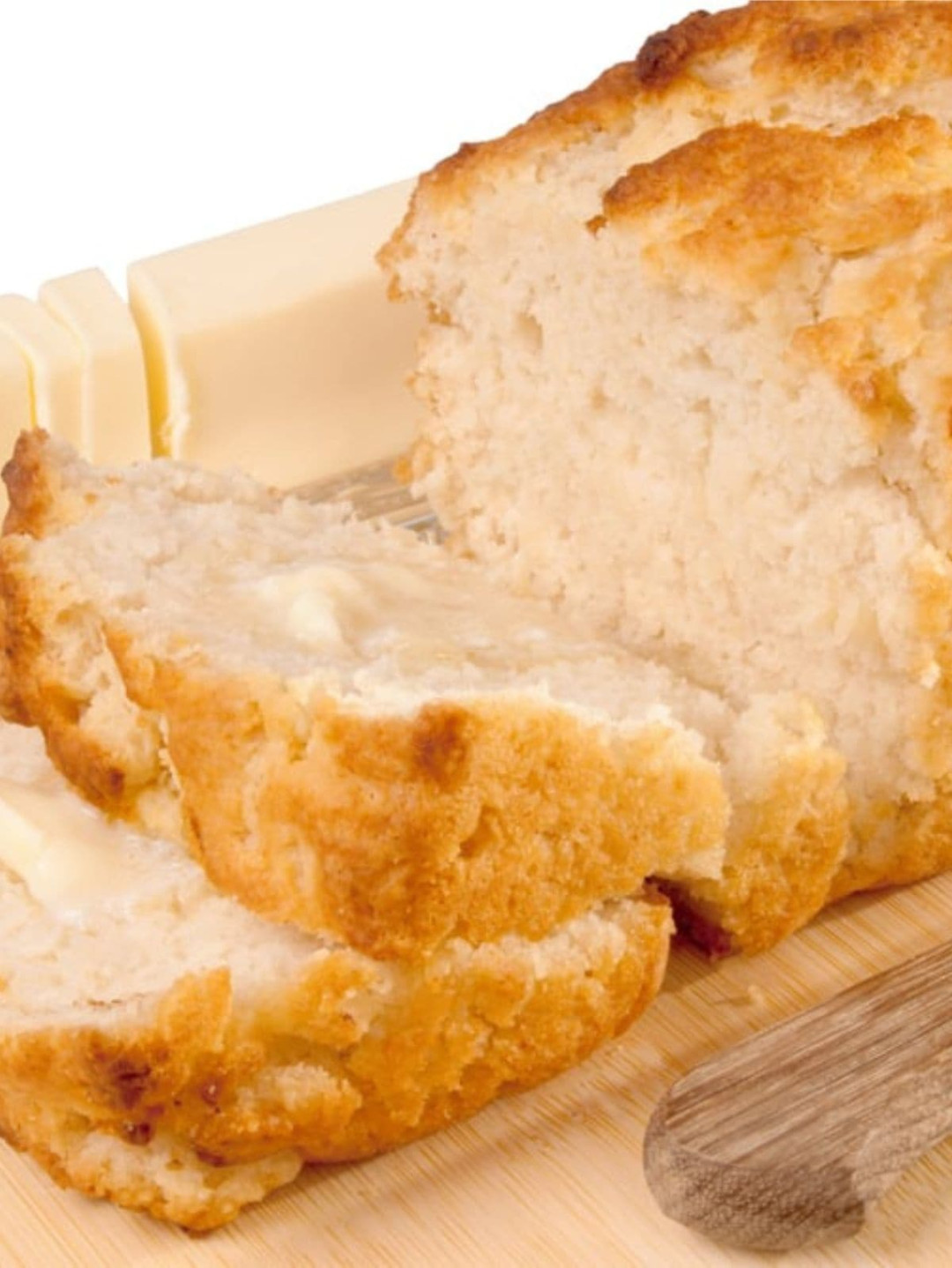Beer bread, a simple yet satisfying treat, has long captivated taste buds with its rustic charm and comforting aroma. But today, we’re taking this classic recipe to new heights, infusing it with global flavors and culinary artistry.
Ingredients:
3 cups all-purpose flour

Image Source: kitchenfunwithmy3sons.com
Preparation Process:
1. Preheat Your Oven: Begin by preheating your oven to 375°F (190°C). This ensures optimal baking conditions for your bread.
2. Combine Dry Ingredients: In a large bowl, whisk together the all-purpose flour. This creates a smooth base for the wet ingredients to be incorporated.
3. Incorporate Wet Ingredients: Gradually pour in the beer, whisking until the flour is fully moistened. The beer adds a unique flavor and moisture to the bread.
4. Melt the Butter: While the batter is resting, melt the unsalted butter. This will be used to enhance the flavor and texture of the bread.
5. Combine and Pour: Gently fold the melted butter into the beer batter. Once combined, pour the batter into a greased 9×5-inch loaf pan.
6. Bake to Perfection: Place the loaf pan in the preheated oven and bake for 45-50 minutes, or until a toothpick inserted into the center comes out clean.
7. Cool and Serve: Once baked, remove the bread from the oven and let it cool in the pan for a few minutes before transferring it to a wire rack to cool completely.
Total Time Required: 1 hour
Serving Ideas:
Classic Pairing: Serve warm with butter and honey for a simple yet delicious treat.
Cultural Influences:
This recipe is a testament to the power of culinary fusion, blending traditions from around the globe. The simplicity of the ingredients and the ease of preparation reflect the heart of American comfort food. The use of beer, a beverage with a rich history dating back to ancient civilizations, adds a global dimension to the dish.
As we savor this Brewed Wonder, we’re not just enjoying a delicious meal; we’re also partaking in a culinary journey that spans continents and cultures. It’s a reminder that the most extraordinary dishes often emerge from the simplest of beginnings.